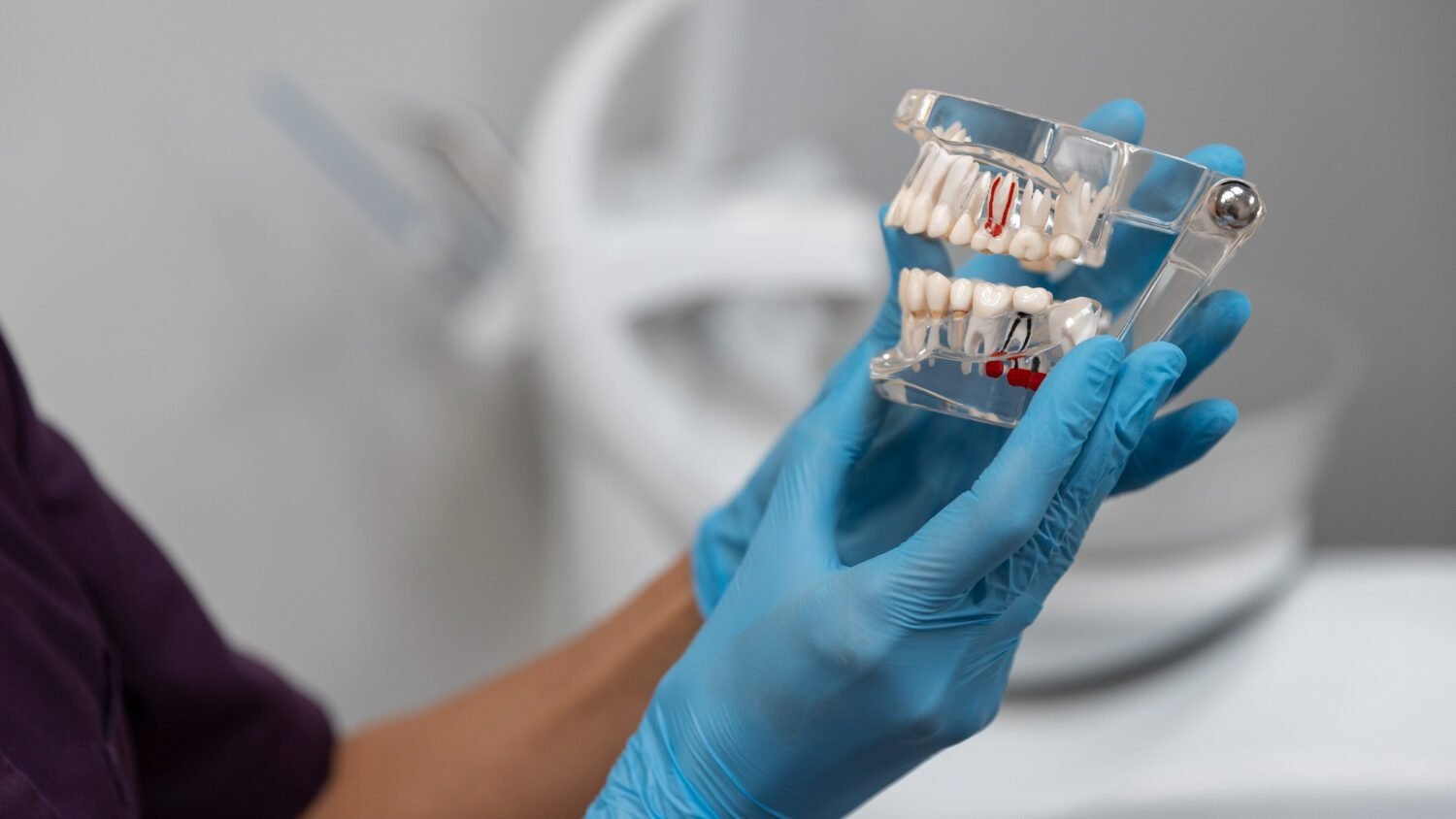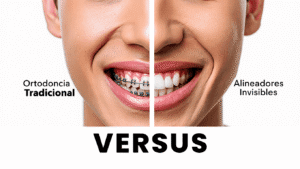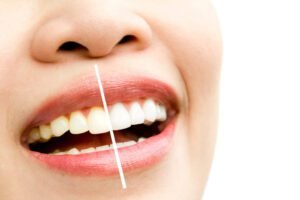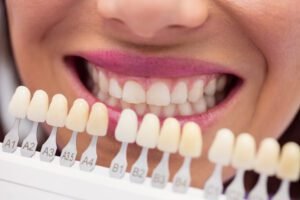1. Do you feel like your dental implant is loose? I get it

That awkward moment when something doesn’t quite fit… and we’re not talking about emotions, but about that implant that once seemed indestructible and now moves more than your office chair. Is it happening to you? You’re not alone, and you’re not crazy.
Mucha gente llega al consultorio diciendo: “Doctora, creo que mi implante está flojo, pero me dijeron que eso no pasa”. Error número uno: los implantes sí pueden aflojarse, y pretender que son eternos y perfectos es parte del problema.
Want to know what to do, how to avoid it, and why it happens? Keep reading, because I’m about to tell you what no one else will about this topic.
2. Implants: foreign bodies that also wear down (though nobody tells you that)

First things first: el implante no es parte de tu cuerpo. Es un cuerpo extraño, aunque esté hecho para convivir contigo.
“Implants are still foreign bodies inside the mouth, right? They’re biocompatible, yes, but they also require a certain level of maintenance.” — Dr. Alejandra Mora
That word that sounds so nice —biocompatible— doesn’t mean “invincible.” It means your body tolerates it, but that doesn’t mean it doesn’t need specific care and regular check-ups.
Cuando colocamos un implante, esperamos que se integre perfectamente al hueso (lo que llamamos osteointegración). Pero esa relación hueso-implante puede deteriorarse si no la alimentas con lo que necesita: buena higiene, visitas al dentista, hábitos saludables.
3. The big mistake: thinking an implant is “for life” without maintenance
This is the most dangerous myth out there:
🗣️ “Me puse un implante porque así me olvido del problema.”
No, dear reader. You got it to solve a problem, not to forget about your mouth. And that requires responsibility.
“Many patients think it’s just getting them placed and never worrying about them again. And no, they also require constant maintenance, carried out over the years.” — Dr. Alejandra Mora
No estamos hablando de ir al dentista cada mes, pero un control anual mínimo es fundamental. Revisar el estado del tornillo, la integración al hueso, el estado de la encía, el ajuste de la corona. Pequeñas acciones que evitan catástrofes.
Este es el mito más peligroso que circula por ahí:
Do you know what worries me most when I see a loose implant? That it could have been avoided.
These are the silent enemies that sabotage your implant without you even realizing it:
🚬 Fumar: reduce el flujo sanguíneo a las encías, compromete la cicatrización y acelera la pérdida ósea.
🦠 Higiene deficiente: el implante no duele como un diente natural cuando algo va mal, por eso puedes tener infección sin darte cuenta.
🥤 Dietas ácidas y blandas: que no estimulan el hueso ni fortalecen la estructura.
😬 Bruxismo: ese hábito de apretar los dientes de noche que tú no notas, pero tu implante sí.
“If the patient has bad habits, like smoking or poor hygiene, that affects the implant. It’s not cared for the same way as a natural tooth, but it still requires maintenance.” — Dr. Alejandra Mora
5. Loose implant or loose screw? Learn how to spot the real problem
Here’s a technical detail that can make the difference between a quick dentist visit… and major surgery.
Did the crown move, or the implant itself?
- If the screw that holds the crown to the implant is loose, it might feel like the entire implant is moving. But in reality, it’s just the top part. And it can be easily fixed with a simple adjustment.
- If the movement is coming from the root of the implant (the part embedded in the bone), then we’re dealing with a serious issue: failed osseointegration, bone loss, or peri-implantitis.
📌 Dato real: muchos pacientes no saben distinguir un movimiento menor de una complicación mayor. Por eso nunca intentes “ver si lo puedes ajustar tú”, y mucho menos con la lengua, un palillo o tus dedos. 🙄

6. Peri-implantitis, bone loss, and loosening: the trio nobody wants to deal with
When the implant becomes loose from the base, there’s often a silent culprit behind it: peri-implantitis.
What is it?
An inflammation and infection around the implant that progressively destroys the bone supporting it. It doesn’t hurt at first. It shows no clear symptoms. But when it does… it’s often too late.
How do you prevent it?
- Regular check-ups
- Flawless at-home hygiene
- Specialized cleanings with non-abrasive instruments
- Bruxism control
- Quitting smoking
If not treated in time, peri-implantitis can lead to complete implant failure—and leave the area unsuitable for a future one.
7. What to do if your implant is loose (Clear, no-nonsense guide)

Don’t stress any further. Here’s the step-by-step, no sugarcoating:
👉 1. Don’t panic
Not every loose implant is a lost cause. Sometimes it’s just a screw.
👉 2. Don’t touch it
Don’t try to move it, adjust it, or tighten it yourself. You could make things worse.
👉 3. Call your dentist
Book an appointment as soon as possible. The sooner you act, the better the chances of solving it without surgery.
👉 4. Follow the instructions
If there’s an infection, antibiotics. If it’s a loose screw, it gets tightened. If it’s peri-implantitis, targeted treatment.
👉 5. Evaluate your habits
If you’ve made it this far, it’s time to rethink how you’re taking care of your mouth. Do you smoke? Are you brushing properly? Do you get cleanings? It’s not always the implant’s fault.
“The idea is, eventually and over time, to replace the crown—not the implant. But to do that, we have to keep the implant super healthy.” — Dr. Alejandra Mora
8. How to keep it from happening again: maintenance, check-ups, and a mindset shift
Want your implant to last 20 years or more? Then you need to change the mindset that says, “this is already done.”
🧼 Higiene diaria, sin excusas: cepillo eléctrico, hilo dental, cepillos interdentales si hace falta. No hay excusas.
📆 Revisiones periódicas: no es cada mes, pero sí cada 6-12 meses. Especialmente si tienes varios implantes o antecedentes de enfermedad periodontal.
💬 Comunicación con tu dentista: cualquier sensación rara, presión, mal aliento o movilidad… se reporta. No esperes a que el problema “se resuelva solo”.
🛑 Evita el tabaco, el azúcar en exceso y la autodiagnosis de Google.
Conclusion: the loose implant isn’t the problem. Ignoring it is.
Dental implants aren’t magic no son mágicos—but they’re not a punishment either. They’re a powerful tool to restore function and aesthetics… if you treat them right.
If you already have a loose one: act now. If you’re about to get one: prepare properly. And if you have several: get them checked. Don’t let the false sense of “everything’s fine” cost you thousands of euros and years of frustration.
“Part of an implant’s success is maintenance. If you abandon it, you’re doomed to lose it.” — Dr. Alejandra Mora
Now you know. No excuses. You have the power to keep that implant solid for decades.
Is this happening to you? Do you know someone with a loose implant?
Share this article with them. You might be saving not just a tooth… but an entire smile. 😬





